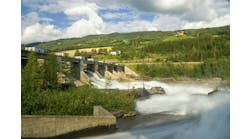Henry Stone died early Saturday morning December 1, 2018. Henry was the last of the executive nuclear power pioneers that led the transition from navy nuclear plants to commercial nuclear power. Henry was born February 10, 1922 in Munich, Germany and was a Holocaust survivor. He served 3 years during World War II with the US Army Engineers (South Pacific). He graduated summa cum laude with a BS degree in Mechanical Engineering from the University of Buffalo (now SUNY) in 2 years. He also obtained an MS degree in Engineering from Union College. He joined GE in 1948 and in 1950 joined the Knolls Atomic Power Laboratory (KAPL) developing power plants for Naval vessels, particularly submarines. His assignments included fluid flow, heat transfer and reactor shielding. He held supervisory positions in Reactor Safeguards, Shielding (co-author of the Rockwell Shielding Manual along with John Taylor from Westinghouse) and Power Plant Engineering. He was Project Manager in charge of design, construction and testing of a land based prototype and a nuclear submarine plant of an advanced design. In 1962 he was appointed Engineering Manager for the S5G Project, a prototype reactor designed for the U.S. Navy to provide electricity generation and propulsion for nuclear submarines. S5G stood for “Submarine Platform 5th generation General Electric.” The mission of the S5G prototype was to reduce and, where possible, eliminate noise so that a submarine could avoid detection from sonar. In 1968 he became General Manager of the KAPL, responsible for the design, construction and testing of several naval reactor plant projects, operation of full-scale prototype naval nuclear plants and training of Navy Nuclear personnel and reported directly to Admiral Hyman G. Rickover, the father of the United States’ Nuclear Navy. In 1974 he transferred to GE’s Commercial Nuclear Power Division in San Jose, CA, and the Admiral sent him a congratulatory letter. Admiral Rickover wrote “As you know, I have never been satisfied with the work that anyone has done, including myself. However, considering the vast difficulties of the Program -- the many things that had to be accomplished in a short-time, the high degree of engineering and scientific technical excellence required – I consider that you have done a most outstanding job.” In 1975 he was appointed General Manager GE Boiling Water Reactor Systems Department, responsible for development and design engineering activities of Boiling Water Reactor Plants and the initial design of the Advanced Boiling Water Reactor Plant (ABWR) built in Japan. In 1977 he became General Manager Nuclear Energy Engineering Division, responsible for boiling water reactor engineering, engineered equipment procurement and operation of the Vallecitos Nuclear Center. He was elected GE Vice President in April 1978.
From 1987 to about 2010 he was a consultant to various electric utilities (TVA, Boston Edison, Centerior Energy, Commonwealth Edison, Illinois Power and Southern California Edison). He did consulting work for Government Agencies (Super Collider, Department of Energy). He also served on Nuclear Safety Committees of Pressurized and Boiling Water Reactors (Sequoyah, Three Mile Island, Watts Bar, Browns Ferry, Pilgrim, Peach Bottom, Quad Cities, Clinton and Oyster Creek). He participated in a safety study of DOE reactors for the National Academy of Engineering. He was on a review team of the Mixed Oxide Fuel (MOX) and the Pit Disassembly and Conversion (PDCF) Projects for DOE. He participated in an Independent Technology Review Group of advanced high temperature reactor preliminary concepts for DOE and in a review of a Power Conversion Unit of an advanced reactor concept for General Atomics. He participated in a safety review of Hydrogen Generation in the Bechtel/DOE Waste Treatment Plant Project. He served on an initial “Red Team” reviewing the plans for the Global Nuclear Energy Partnership (GNEP). He worked on reviews for the Next Generation Nuclear Power Plant (NGNP) at Idaho National Laboratory. He was a member of the Project Management Review Team for the University of California reviewing Projects at Los Alamos and Livermore National Laboratories. In 2015, at the age of 93, he participated as an instructor in nuclear engineering courses given at the Idaho National Laboratory (INL) in Idaho Falls, ID.
As for cyber security, he addressed the ICS Cyber Security Conference giving a perspective on the early days of nuclear power. He also made sure that cyber security was included in the course given at INL. On a personal note, he was my Father-in-Law and we will miss him dearly.
Joe Weiss



